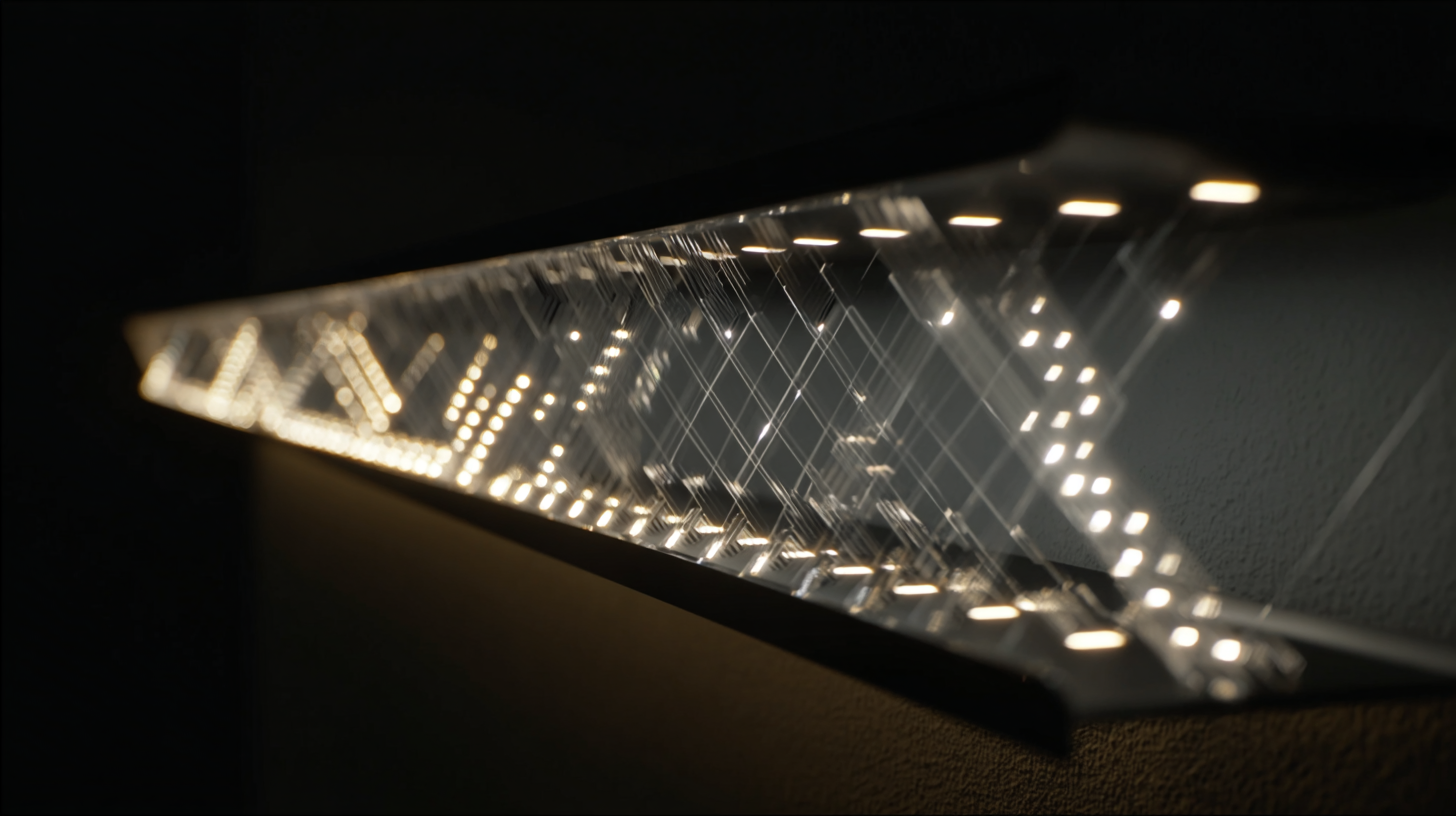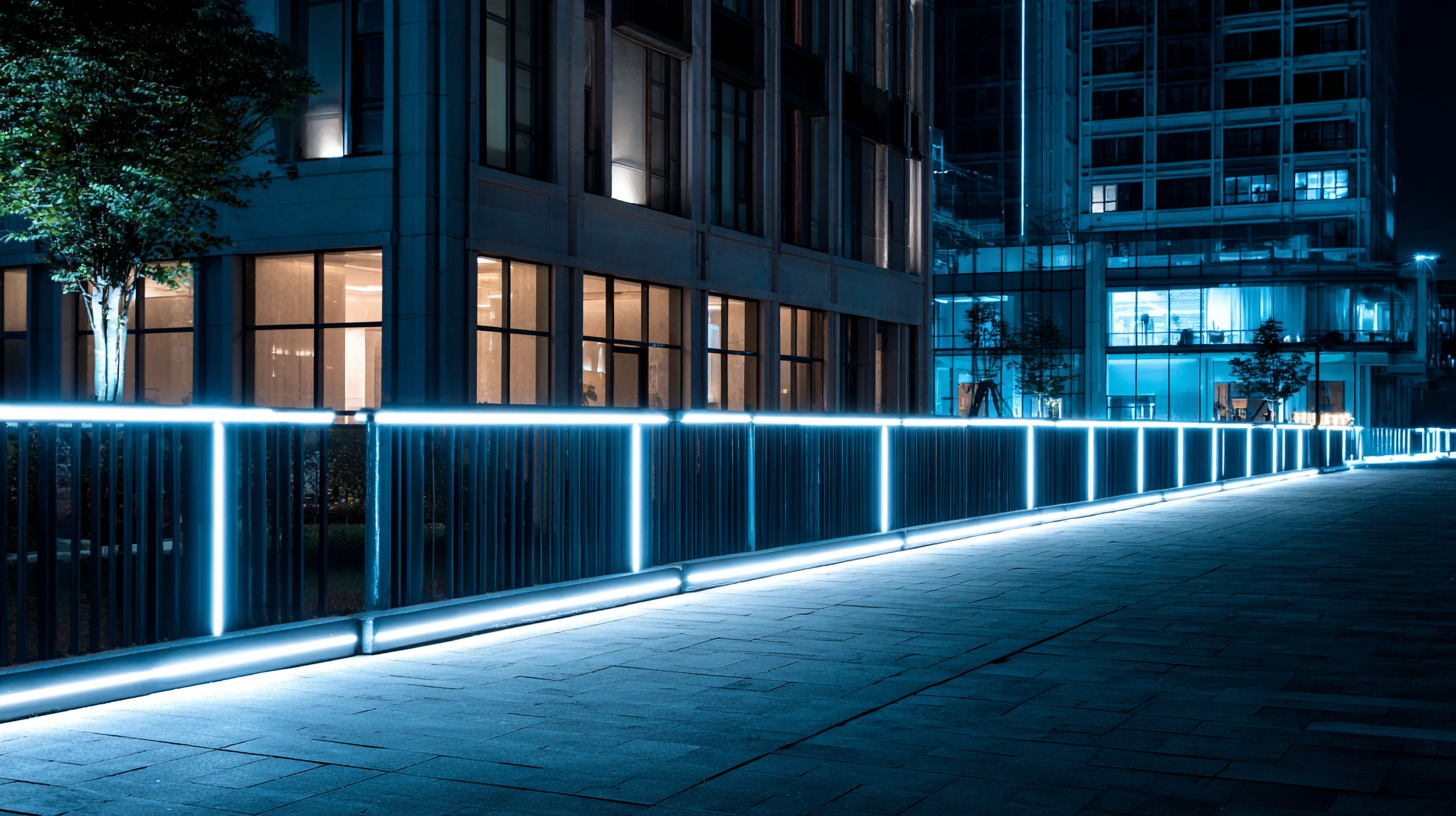
In the rapidly evolving landscape of modern technology and design, innovative applications of Light Barriers have begun to emerge as pivotal components in enhancing functionality and user experience. These sophisticated systems utilize the principles of light detection to create dynamic interactions and safety mechanisms across various domains, from smart homes to advanced industrial automation. By seamlessly integrating Light Barriers into everyday objects and environments, designers and engineers are not only improving efficiency but also redefining the way we interact with technology.

This article delves into the myriad of innovative uses of Light Barriers, exploring their role in design aesthetics, safety protocols, and smart technology integration, while offering practical tips for harnessing their potential in various applications. As we unpack these exciting developments, we will highlight the transformative impact of Light Barriers on the future of design and technology.
Light barriers have emerged as a transformative element in the realm of smart home automation systems. By utilizing advanced technologies, these barriers facilitate seamless interaction between users and their environments. For instance, smart light switches equipped with light-sensing capabilities adjust illumination levels based on the ambient light, creating a perfectly tailored atmosphere for any activity. This innovation not only enhances convenience but also significantly contributes to energy efficiency, allowing homeowners to reduce their electricity consumption effortlessly.
Moreover, light barriers are instrumental in managing other smart devices within the home. Consider the integration of smart blinds; these devices utilize light detection to open or close based on sunlight intensity, optimizing natural lighting and improving indoor comfort. This interconnectedness exemplifies how light barriers serve as a foundation for creating a cohesive, automated system that anticipates and reacts to the needs of the household. As smart home technology continues to evolve, the role of light barriers will undoubtedly expand, driving greater innovation in automation and enhancing the overall living experience.
Light barriers, or light curtain sensors, have emerged as a vital component in modern surveillance technologies, significantly enhancing security measures across various applications. These devices utilize beams of light to create an invisible shield around sensitive areas, allowing for immediate detection of intrusions. When the light beam is interrupted, the system triggers an alert, enabling rapid response by security personnel. This functionality is crucial for protecting high-security zones, such as banks, airports, and industrial facilities, where unauthorized access could lead to serious consequences.
Moreover, light barriers are not only effective in traditional security scenarios but also integrate seamlessly with advanced security systems. By combining light barriers with video surveillance and alarm systems, organizations can create a more comprehensive defense strategy. The data collected through these systems enhances situational awareness and aids in real-time monitoring, providing a significant advantage in crime prevention and response efforts. As technology progresses, the applications of light barriers continue to evolve, offering innovative solutions to meet the increasing demands of safety and security in our modern world.
This chart illustrates the rise in the adoption of light barriers in modern surveillance technologies from 2018 to 2023, showcasing how these innovations have enhanced security across various sectors.
The integration of light barriers in commercial spaces has revolutionized both aesthetics and functionality in modern design. By strategically placing these barriers, designers can create dynamic environments that not only guide light but also influence how individuals interact within a space. For instance, light barriers made of translucent materials can effectively delineate areas without sacrificing openness, allowing natural light to permeate while providing visual privacy. This balance enhances the overall ambiance, making commercial spaces feel inviting and vibrant.

Moreover, innovative applications of light barriers extend beyond simple partitioning. In retail environments, these barriers can be used creatively to showcase products by controlling the flow of light, thereby highlighting features and creating focal points. Additionally, they can serve as interactive elements, reacting to movements or changes in the environment, thus engaging customers in a unique shopping experience. As technology continues to evolve, the potential for light barriers in commercial design is boundless, paving the way for smarter, more responsive environments that cater to the needs of businesses and consumers alike.
Light barriers, often referred to as optical sensors, have found exciting applications in wearable technology, enhancing both functionality and user experience. These devices can detect proximity and interactions with users, enabling innovative features in smartwatches, fitness trackers, and augmented reality glasses. For example, light barriers can help monitor heart rate by measuring blood flow through the skin, providing accurate health metrics without invasive methods. Additionally, they can facilitate gesture controls, allowing users to operate devices with simple hand movements, making technology more intuitive and accessible.
Tips for integrating light barriers into wearable designs include ensuring sensitivity adjustments to cater to various lighting environments, which enhances usability. Moreover, consider the aesthetic aspect of these components; sleek integration into wearables not only improves functionality but also maintains style. Testing from a user-centered design perspective is crucial; gather feedback on how intuitive the interactions are, ensuring that the technology enhances, rather than complicates, the user experience.

The integration of light barriers into energy-efficient architecture represents a significant advancement in sustainable design practices. By utilizing these innovative structures, architects can effectively control lighting conditions within a building, thereby reducing reliance on artificial lighting. Light barriers can filter natural sunlight, allowing for optimal illumination while minimizing glare and heat gain. This not only enhances the comfort of the indoor environment but also conserves energy, leading to lower utility costs and a reduced carbon footprint.
Furthermore, light barriers contribute to passive solar design, which harnesses natural energy for heating and cooling purposes. Positioned strategically, these barriers can reflect light into deeper areas of a space or provide shade to prevent overheating during warmer months. This dynamic approach to building design ensures that energy consumption is kept to a minimum, embodying the principles of sustainability. As architects and designers continue to explore innovative solutions, light barriers will play an increasingly vital role in shaping environmentally conscious architecture.
| Application Area | Light Barrier Type | Energy Savings (%) | Sustainability Impact | Additional Benefits |
|---|---|---|---|---|
| Skylights in Offices | Transparent Photovoltaic Glass | 30% | Reduces reliance on artificial lighting | Aesthetic enhancement, natural illumination |
| Greenhouses | Solar Control Films | 25% | Minimizes heat loss while optimizing light | Enhanced plant growth, reduced cooling costs |
| Residential Windows | Low-Emissivity Coatings | 20% | Improves insulation, decreases heating needs | Increased comfort, reduced energy bills |
| Urban Architecture | Light Shelves | 15% | Maximizes daylight penetration | Improved aesthetics, reduced glare |
| Smart Buildings | Dynamic Glazing | 40% | Adapts to sunlight conditions | Increased comfort, reduced HVAC load |
